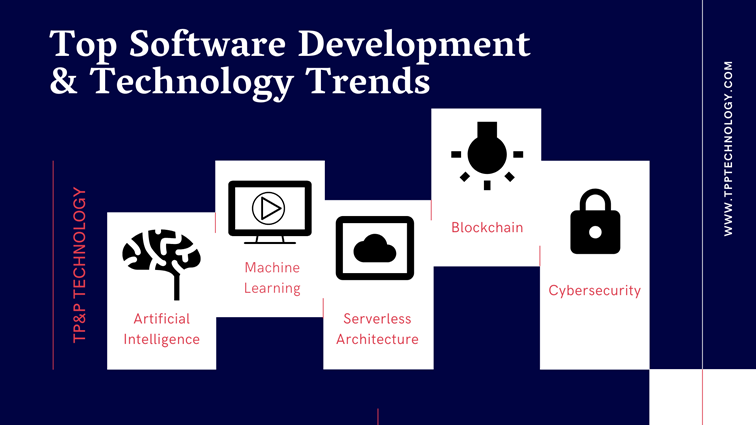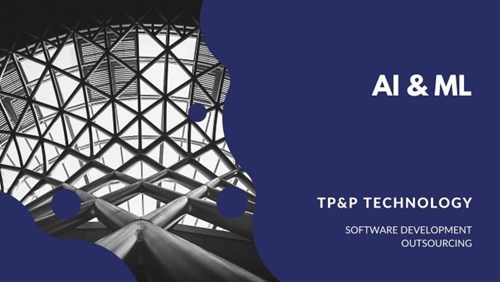
Top 5 Software Development & Technology Trends for 2020
The technology landscape constantly changes and innovates itself. Nowadays, technology plays a significant role impacting and transforming the way we live, work, and do things in our everyday lives. And what does this mean for businesses? Obviously, it’s important that businesses keep up and stay up-to-date with the current software development and technology trends, in order to gain advantage and stay ahead of the competition in the new digital economy.
As for software developers and other IT professionals, it’s also essential to have your eyes on the anticipated trends of technologies to know which skills could be required of your jobs, and how the future IT market will evolve so that you can extend your learning and adapt well to the IT job market in 2020 and the coming years.
Let’s examine the top 5 technology and software development trends that are expected to dominate the IT industry in the year 2020.
1. Artificial Intelligence (AI) continues its winning streak
In the recent years, Artificial Intelligence (AI) is one of the hottest and most talked-about topics in the IT industry where it seems like the media continuously reports on the development and progress of this innovative technology every day. In the year 2020, AI is expected to keep its domination trend where businesses will continue to invest in building AI solutions to optimize and transform their various business processes.
To apply AI into business, companies will need to identify how AI can help solving key business challenges in their business. For the time being, AI is currently applied across a range of business industries for various activities, including: Operations, Sales and Marketing, Customer Services, Security, etc. with more advanced use cases are expected to be introduced in 2020. In particular, AI is also integrated into a plethora of business process solving unique problems and optimize many existing business processes.
In terms of consumer use, AI now has its presence in the many activities that we do every day, such as: voice personal assistants (e.g. Alexa, Echo, Google Assistant), Streaming services (e.g. Netflix, Spotify etc.), online and retail shopping, and many more.
By leveraging AI-powered solutions, companies will be able to make use of their customer data to predict customers’ actions and improve their journey. Using AI to process and analyze data for insights, companies will be able to understand the market and serve their customer better, which will directly have a positive impact on efficiency and profitability.
To learn more about potential jobs in AI, read about AI use cases in retails and other industry or why business should outsource AI solutions development.
2. Machine Learning is highly important
As a subset of AI, Machine Learning is quickly being adopted and applied in all kinds of business in various industries, generating a strong and growing demand of skilled Machine Learning Engineers. In the US alone, according to Indeed, Machine Learning Engineers are among highest paying jobs in the IT industry with an annual salary average at $146,085.
Some of the popular Machine Learning applications include predictive analytics, recommendation system, and pattern recognition. In particular, many companies that are in the Media and Entertainment industry currently investing heavily into Machine Learning in order to optimize search results, which in turns improve customer experience and avoiding customer churn.
Furthermore, based on a research by Zion Market, the Global Machine Learning Market is predicted to grow to $20.83 Billion by 2024. In 2017, the market value for Machine Learning was valued approx. USD 1.58 billion. Such strong grow figures indicate the increasingly importance and domination of Machine Learning in 2020 and the coming years.
3. The Rise of Serverless architecture
Serverless architecture is among the fastest growing technology trend in the recent years, with an increasing adoption by various business organizations including software development companies.
The name serverless may imply that there’s no server, but on the contrary, server is still in used, except that the infrastructure responsibility is now in the hand of cloud provider. One of the advantages of serverless architecture is that this technology allows companies to reduce need and dependency on IT infrastructure and its maintenance as well as other software system.
According to a report by Research and Market, In 2017, the global serverless architecture market size was found to be around $3,105.64 million, and is anticipated to reach $21,988.07 million by 2025, result in a forecast CAGR of 27.9% from 2018 to 2025.
In the past, Serverless architecture has been mainly adopted and deployed by Enterprise for real-time applications on an enormous scale, and in a prompt manner. However, in 2020 and the coming years, large-scale organizations and SMEs are expected to transit to toward the adoption of serverless technology due to its many benefits including high performance level and scalability, as well as pay-as-you-go where companies only need to pay for the resources consume. The technology offers the advantage of app development using dynamic and scalable cloud-native architecture which is cost-effective, allowing business to allocate resources toward other business functions of higher values.
Currently, among the major providers for Serverless architecture market are Amazon AWS, Microsoft Azure, and Google Cloud – with other providers including Alibaba, IBM, and Oracle are now also participating and competing in the market.
However, there are also drawback to serverless technology, some of the issues with third-party APIs are security & compliance, vendor lock-in concerns, and other architectural complexities which might cause deter in the adoption.
4. Blockchain won’t go away anytime soon
When it comes to Blockchain technology, many people would immediately think about cryptocurrencies such as Bitcoin, Ethereum, and more. At the current state, Blockchain is an emerging technology which has evolved beyond the purpose of speculating for investing. In 2019, after the all-time high bitcoin price comes crashing down in 2017, many companies are still carrying out investment in developing and implementing blockchain based solutions, and the demand for blockchain developers are still growing strongly without any sign of stop.
As an emerging technologies, the Blockchain development industry still hasn’t reached its full maturity. So, we’re still not yet to witness the full potential that Blockchain can impact on our everyday lives. Nevertheless, it’s reasonably safe to say that Blockchain will continue to grow with more and more use cases are expected to be introduced in the future.
Also, according to a 2019 report by hired.com, the global demand for blockchain developers is up 517% compared to last year. Furthermore, a Global blockchain survey by Deloitte stated that fifty percent of respondents found that blockchain technology has become a critical priority for their organizations in 2019 – a 10 point increase over the last year.
And if your business is looking to build Blockchain-based application, then this is the right time to do so.
5. Cybersecurity
Compared to AI and Blockchain, cybersecurity might not seem like a new trend as it has been around much longer. Yet, along with the introduction of new and emerging technologies, cybersecurity has been evolving to keep up with the new security threats that come with those technologies. Hackers will always find new ways to exploit the potential vulnerability of the new technologies in order to illegally access the sensitive data. Thus, in 2020, cyber security will continue to be prominent and evolve to help businesses defend against malicious hacking activities.
As the top five above trends do not seem to slow down anytime soon, more and more companies invest in re-training their staffs to learn the new technologies to work on the project later, others desired skills for software development in 2020 include DevOps, Cloud Computing, and advanced data analytics and more.
So, What's Next?
New technologies are emerging and offer many potential opportunities for businesses in the foreseeable future. More importantly, the demand for the development of all above technology just keeps growing stronger and stronger day by day, meaning it’s now time for business to start getting on board and leverage these technology, at the early stage, to position themselves as an industry leader in the near future.



